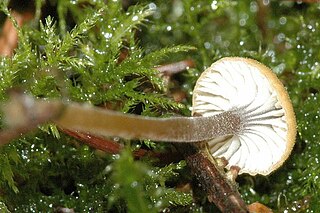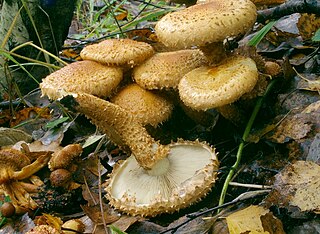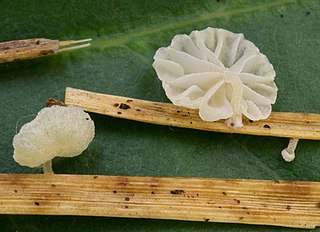Related Research Articles

The redhead is a medium-sized diving duck. The scientific name is derived from Greek aithuia, an unidentified seabird mentioned by authors including Hesychius and Aristotle, and Latin americana, of America. The redhead is 40–56 cm (16–22 in) long with an 74–84 cm (29–33 in) wingspan; the weight ranges from 1,030–1,080 g (36–38 oz), with males weighing an average of 1,080 g (38 oz) and females an average of 1,030 g (36 oz). It belongs to the genus Aythya, together with 11 other described species. The redhead and the common pochard form a sister group which together is sister to the canvasback. This waterfowl is easily distinguished from most other ducks by the male's copper colored head and pale blue bill during the breeding season; from its close relative canvasback it is distinguished by the more rounded head, shorter bill, and yellow, not red, eye. The Eurasian common pochard is even more similar, but very rarely overlaps in range; it also differs in having a red eye, and a more acute, less rounded head shape.
A redhead is a person with red hair.
Equus may refer to:

Neolecta is a genus of ascomycetous fungi. The species share the English designation "Earth tongues" along with some better-known fungi with a similar general form, but in fact they are only distantly related.

Coprinellus is a genus of mushroom-forming fungi in the family Psathyrellaceae. The genus was circumscribed by the Finnish mycologist Petter Adolf Karsten in 1879. Most Coprinellus species were transferred from the once large genus Coprinus. Molecular studies published in 2001 redistributed Coprinus species to Psathyrella, or the segregate genera Coprinopsis and Coprinellus.

Rickenella is a genus of brightly colored bryophilous agarics in the Hymenochaetales that have an omphalinoid morphology. They inhabit patches of moss that grow on soil, tree trunks and logs in temperate regions of the planet. Phylogenetically related agarics are in the genera Contumyces, Gyroflexus, Loreleia, Cantharellopsis and Blasiphalia, as well as the stipitate-stereoid genera Muscinupta and Cotylidia. and the clavarioid genus, Alloclavaria.
Blasiphalia is a fungal genus in the family Repetobasidiaceae. A monotypic genus, it contains the honey colored omphalinoid agaric, Blasiphalia pseudogrisella, which grows with the liverwort genus Blasia. Phylogenetically related agarics are in the genera Rickenella, Gyroflexus, Loreleia, Cantharellopsis and Contumyces, as well as the stipitate-stereoid genera Muscinupta and Cotylidia and clavarioid genus, Alloclavaria. Blasiphalia is most similar to Rickenella and Contumyces, and was only just recognized as a distinct genus in 2007 based upon molecular analysis. The fungus is unique in parasitizing Blasia by forming clasping appresoria on its host's rhizoids. Its basidiospores also germinate on the host's gemmae and clasp them and therefore can be disseminated together with the gemmae.

Lichenomphalia is both a basidiolichen and an agaric genus. Most of the species have inconspicuous lichenized thalli that consist of scattered, small, loose, nearly microscopic green balls or foliose small flakes containing single-celled green algae in the genus Coccomyxa, all interconnected by a loose network of hyphae. The agaric fruit bodies themselves are nonlichenized and resemble other types of omphalinoid mushrooms. These agarics lack clamp connections and do not form hymenial cystidia. The basidiospores are hyaline, smooth, thin-walled, and nonamyloid. Most of the species were originally classified in the genera Omphalina or Gerronema. Historically the species were classified with those other genera in the family, the Tricholomataceae together with the nonlichenized species. Lichenomphalia species can be grouped into brightly colored taxa, with vivid yellow and orange colors, versus the grey brown group, depending upon the microscopic pigmentation deposits. Molecular research comparing DNA sequences now place Lichenomphalia close to the redefined genus Arrhenia, which together with several other genera not traditionally considered to be related, fall within the newly redefined Hygrophoraceae.

Pholiota is a genus of small to medium-sized, fleshy mushrooms in the family Strophariaceae. They are saprobes that typically live on wood. The genus has a widespread distribution, especially in temperate regions, and contains about 150 species.

Mythicomyces is a fungal genus in the family Mythicomycetaceae. A monotypic genus, it contains the single species Mythicomyces corneipes, first described by Elias Fries in 1861. The fungus produces fruit bodies with shiny yellowish-orange to tawny caps that are 1–3 cm (0.4–1.2 in) in diameter. These are supported by stems measuring 2–5.7 cm (0.8–2.2 in) long and 1–2 mm thick. A rare to uncommon species, it is found in northern temperate regions of North America and Europe, where it typically fruits in groups, in wet areas of coniferous forests. There are several species with which M. corneipes might be confused due to a comparable appearance or similar range and habitat, but microscopic characteristics can be used to reliably distinguish between them.

Rimbachia is a genus of fungi in the family Tricholomataceae. The genus contains about ten species with a widespread distribution in tropical regions.
Semiomphalina is a basidiolichen genus in the family Hygrophoraceae. The genus is monotypic, containing the single species Semiomphalina leptoglossoides, found in Papua New Guinea.

Resinomycena is a genus of fungi in the mushroom family Mycenaceae. The genus contains at least eight species found in North America, Europe and eastern Asia. This genus of small white to tan colored agarics is saprophytic and colonizes leaf litter, bark, small twigs and decaying monocot vegetation. The fruitbodies are small and resemble Mycena or Marasmius or Hemimycena and are distinguished by amyloid spores, poorly dextrinoid tissues, and the abundant oily, resinous cystidia on the pileus, lamellae edges and stipes. One recently described species, Resinomycena fulgens from Japan that is a synonym of Resinomycena japonica, has luminescent fruitbodies.
Rimbachia is a species of fungus in the family Tricholomataceae, and the type species of the genus Rimbachia. It was first described scientifically by the French mycologist Narcisse Théophile Patouillard in 1891.

Muscinupta is a fungal genus that produces small white delicate fan-shaped to cupulate fruitbodies on mosses. It is monotypic, containing the single species Muscinupta laevis. The type species is better known under the name Cyphellostereum laeve but Cyphellostereum is a basidiolichen.

Leccinum arenicola is a species of bolete mushroom in the family Boletaceae. Described in 1979, the fruit bodies (mushrooms) grow in sand dunes from New Brunswick south to Cape Cod.

Saproamanita nauseosa is a species of agaric fungus in the family Amanitaceae. First described by English mycologist Elsie Maud Wakefield in 1918 as a species of Lepiota, it was named for its nauseating odor. The type specimen was found growing on soil in the Nepenthes greenhouse at Kew Gardens. Derek Reid transferred the species to Amanita in 1966, and then in 2016 the separate genus Saproamanita was created by Redhead et al. for saprophytic Amanitas and it was transferred to this new genus.
Sphagnurus is a parasitic mushroom genus in the family Lyophyllaceae that creates conspicuous dead patches on peat moss (Sphagnum) in bogs. The genus contains one species known to inhabit Eurasia and North America. Phylogenetically the genus is closest to, but is isolated from species now classified in the genus Sagaranella Prior to molecular analyses, the most recent classification put it in the genus Tephrocybe, but that genus is allied to Termitomyces.

Hypsizygus ulmarius, also known as the elm oyster mushroom, and less commonly as the elm leech, elm Pleurotus, is an edible fungus. It has often been confused with oyster mushrooms in the Pleurotus genus but can be differentiated easily as the gills are either not decurrent or not deeply decurrent. While not quite as common as true oyster mushrooms, they have a wide range globally in temperate forests. The mushrooms and vegetative hyphae of this species have been studied in recent years for their potential benefits to human health, and mycoremediation.
References
- ↑ Kirk PM, Cannon PF, Minter DW, Stalpers JA (2008). Dictionary of the Fungi (10th ed.). Wallingford, UK: CAB International. p. 258. ISBN 978-0-85199-826-8.
- ↑ Redhead SA. (1984). "Arrhenia and Rimbachia, expanded generic concepts, and a reevaluation of Leptoglossum with emphasis on muscicolous North American taxa". Canadian Journal of Botany. 62 (5): 865–92. doi:10.1139/b84-126.